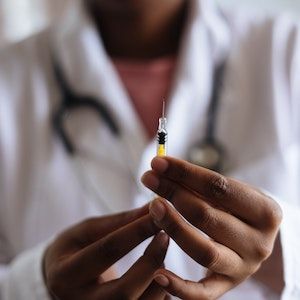Article
Study Finds Anti-Obesity Medications Could Be Sold Profitably for Lower Prices
Author(s):
Many effective anti-obesity medications could be manufactured and sold profitably for a low price, with estimated minimum prices up to 20-fold cheaper than current prices in some countries.
Credit: Pexels/RF._.studio

Several anti-obesity medications could be manufactured and sold at low costs, but prices range widely between countries and ultimately limit access to those most in need, according to new research.1
The analysis of national drug price databases showed that many effective anti-obesity drugs, including semaglutide, tirzepatide, and liraglutide, could be sold profitably at even low estimated minimum prices (EMPs), all of which include a 27% tax and 10% profit margin.
“Our study highlights the inequality in pricing that exists for effective anti-obesity medications, which are largely unaffordable in most countries,” said Jacob Levi, corresponding author, Intensive Care Medicine, Royal Free Hospital NHS Trust.2 “However, we show that these drugs can actually be produced and sold profitably for low prices.”
Across the past 5 decades, obesity rates have tripled, with proposed reasons including globalization, increasingly Westernized diets, and less active lifestyles. The realization that exercise and diet are unlikely to lead to sustained weight loss has sparked interest in medications to act as a supplement to lifestyle changes. Although randomized controlled trials have reported positive results with oral and injectable medications, rivaling results from bariatric surgery, these medications often remain prohibitively expensive in many countries.
The high prices create challenges for millions to afford the medication and serve as barriers to access to treatment. Given the rapidly growing obesity pandemic and positive clinical data on anti-obesity medications, Levi and colleagues urged improvements in accessing these medications for people living with obesity. For the analysis, the team reviewed current global treatment costs and calculated the EMPs of various anti-obesity medications
Across a range of 16 high-, middle- and low-income countries, investigators searched national drug price databases and selected the lowest available price from each of the sources. The team collected active pharmaceutical ingredient (API) export data and national list prices for 6 medications: orlistat, naltrexone/bupropion, topiramate/phentermine, liraglutide, semaglutide, and tirzepatide. The selected medications were proven effective in literature and illustrated a range of different monotherapies, combination tablets, and injectable treatments.
For analysis, minimum price estimates were calculated from export data using an established and published methodology based on the costs of API extracted from Panjiva, a global shipping records database. All EMPs were calculated per 30-day course and included the costs of API, excipients, formulation, taxation, and a 10% profit margin.
The investigative team found that national prices of oral and injectable anti-obesity medications were significantly higher than calculated EMPs. The findings suggest some, but not all, oral treatments can be generally manufactured at very low costs per 30-day course, while injectable medications are most costly.
For oral medications, data showed the prices for a 30-day course of orlistat treatment was greater than $100 in the US and less than $1 in Vietnam. The calculated EMP from export API data was approximately $7 per 30-day course. Meanwhile, the costs for naltrexone/bupropion combination tablets ranged from $326 in the US to $56 in South Africa, compared with an EMP of $55 per 30-day course.
Investigators noted price data for topiramate/phentermine was only available in the US, as the meditation is not approved for weight loss in several countries due to safety concerns. The prices in the US ranged from $120 to $199 per 30-day course, compared with the EMP of the combination tablets at $5.
As for injectable medications, liraglutide costs $1,418 in the US and $252 in Norway, compared with a 30-day EMP of $50. Levi and colleagues noted the price was calculated assuming that the most efficient concentration and dosage of available pens for injections are used. Moreover, national price data for subcutaneous semaglutide ranged from $804 in the US to $95 in Turkey, compared with an EMP of approximately $40 per 30-day course.
National price data for tirzepatide was only available in the US, as it was recently approved for use in type 2 diabetes (T2D) by the US Food and Drug Administration (FDA), but not obesity alone. The analysis suggested prices for a 30-day course ranged from approximately $715 to $1,100, but there were insufficient data in Panjiva to calculate an EMP.
Based on the analysis, investigators called for a public-health approach to obesity management, like that used with other global diseases. They noted that more people are dying worldwide from diabetes and clinical obesity than HIV, tuberculosis, and malaria combined, with millions of lives being saved by treating these infectious diseases at a low cost.
“Now we need to repeat this medical success story, with mass treatment of diabetes and clinical obesity at low prices,” said Andrew Hill, supervising author, Department of Pharmacology and Therapeutics, University of Liverpool, United Kingdom.2 “Pharmaceutical companies have an ethical responsibility to make their new treatments for diabetes and obesity available for anyone in need, in any country."
References
- Levi J, Wang J, Venter F, Hill A. Estimated minimum prices and lowest available national prices for antiobesity medications: Improving affordability and access to treatment [published online ahead of print, 2023 Feb 23]. Obesity (Silver Spring). 2023;10.1002/oby.23725. doi:10.1002/oby.23725
- ObesitySociety. (2023, April 14). Study: Anti-obesity medications could be sold for lower prices. EurekAlert! Retrieved April 18, 2023, from https://www.eurekalert.org/news-releases/986163





